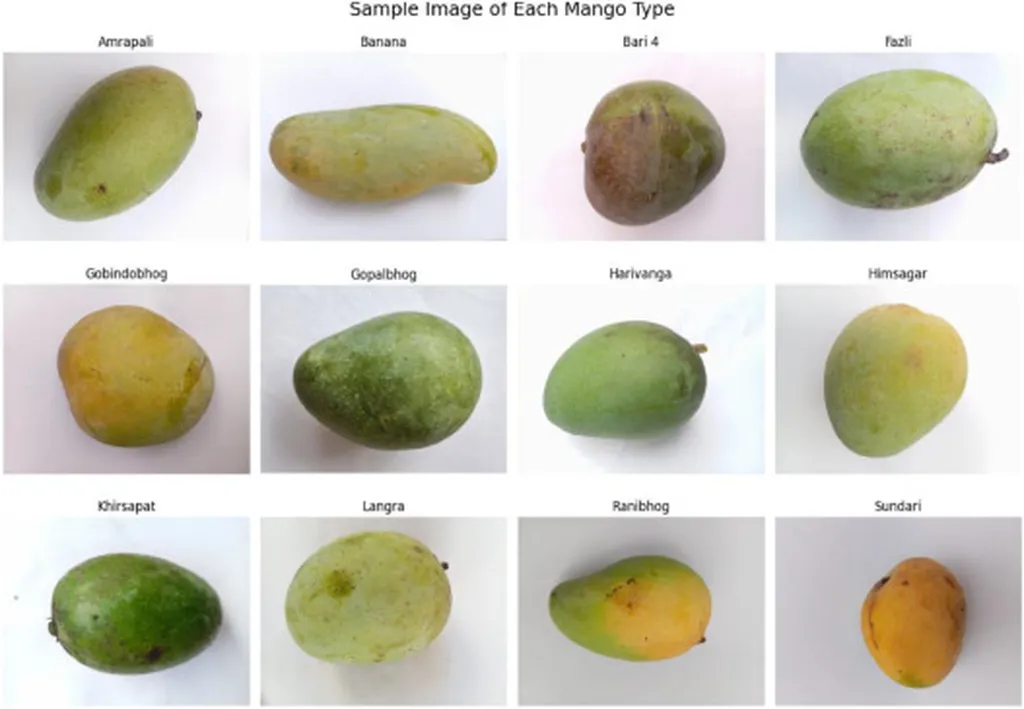In the heart of Bangladesh, a new dataset is ripening, promising to sweeten the future of agricultural technology. Md Sajedur Rahman, a researcher from the Department of Computer Science and Engineering at Bangladesh University of Business and Technology, has compiled a high-resolution image dataset named MangoClassify-12. This collection, published in the journal *Data in Brief* (which translates to *Brief Data* in English), comprises 3,900 images of twelve indigenous Bangladeshi mango cultivars, captured under natural light using smartphones. The dataset is designed to enable automated classification, a breakthrough that could revolutionize the way we identify and assess fruit quality.
The dataset, MangoClassify-12, includes images of mango varieties such as Amrapali, Himsagar, and Langra, among others, all captured from three distinct production regions: Mirpur-2 in Dhaka, Phulbari in Dinajpur, and Rajshahi. “We aimed to create a comprehensive dataset that reflects the diversity of mango cultivars in Bangladesh,” Rahman explains. “This dataset can support machine learning applications like variety identification and quality assessment, which are crucial for the agricultural sector.”
The implications of this research extend beyond the borders of Bangladesh. With the global mango market valued at over $10 billion, the ability to accurately classify and assess mango varieties can streamline supply chains, reduce waste, and enhance marketability. “Imagine a future where a simple smartphone app can identify mango varieties and assess their quality,” says Rahman. “This could empower farmers, exporters, and retailers, making the mango industry more efficient and profitable.”
The dataset is openly accessible via a Digital Object Identifier (DOI), inviting researchers and developers worldwide to explore its potential. By providing raw images without predefined splits or augmentations, MangoClassify-12 offers a flexible benchmark for computer vision research in agriculture. This flexibility could lead to innovative applications, such as mobile-based recognition systems that can be used in the field, reducing the need for manual inspection and speeding up the grading process.
As the world grapples with the challenges of food security and sustainability, datasets like MangoClassify-12 pave the way for smarter, more efficient agricultural practices. “Our hope is that this dataset will serve as a catalyst for further research and development in agricultural technology,” Rahman concludes. With its potential to enhance variety identification and quality assessment, MangoClassify-12 could indeed shape the future of the mango industry and beyond.

